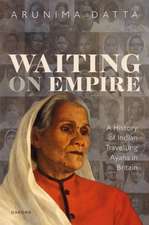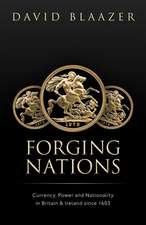Victorian Class Conflict? – Schoolteaching & the Parson, Priest & Minister, 1837–1902
Autor John T Smithen Limba Engleză Hardback – 30 sep 2008
Preț: 351.67 lei
Nou
67.31€ • 70.00$ • 56.41£
Carte în stoc
Livrare din stoc 31 ianuarie
Specificații
ISBN-10: 1845192958
Pagini: 234
Dimensiuni: 167 x 233 x 20 mm
Greutate: 0.48 kg
Ediția:New.
Editura: Liverpool University Press
Cuprins
'A Regeneration of the Parish': Wellsprings of Clergy Interest in Elementary Schooling; 'The Real Milch-cow': The Clergyman's Role in the Elementary Schools; 'The Parson's Fag': The Schoolteacher as the Servant of the Church in the Second Half of the Nineteenth Century; Merely a Growing Dilemma of Etiquette?: The Deepening Gulf Between the Victorian Clergyman and Victorian Schoolteacher; 'Educating our Masters': The Educational Background of Clergyman and Schoolteacher; 'The Unlucky Jar': The Straining of Relationships Between Clergymen and Schoolteachers in the Second Half of the Nineteenth Century; 'An Enemy Within': The Clergymen and the Board Schools, 1870-1902; 'The Old Gods Crumble...'; Index.
Notă biografică
John T. Smith is senior lecturer in education at the University of Hull. He has written numerous articles on 19th-century education and is the author of "The History of Lady Lumley's Foundation" and "Methodism and Education, 1849-1902."
Recenzii
Descriere
Villages and towns in the Victorian era saw a great expansion in educational provision, and witnessed the rise of the elementary teaching profession, often provided and supported by local clergymen. This book investigates the social and economic relationships of such clergymen and teachers who worked co-operatively and at times in competition with each other, their relative positions typified by the comment of one contemporary clergyman as 'those of master and servant'. The inevitable result was a complex of movements in society in the final third of the nineteenth century that led to increasing clashes in villages, as one group (the clergy) sought to preserve its hold on its status and power, while the other (male and female teachers) attempted to secure their new role in society. The research presented is based on previously unused, original sources -- church documents, HMI reports, newspapers and journals and private papers. It is not confined, as is the case with so much recent research, to the Church of England, but breaks new ground in providing a comparative analysis of the social position and educational work of Roman Catholic and Wesleyan clergy, and their collaboration with their elementary school teachers. This book is essential reading for all those interested in Victorian Education.

























